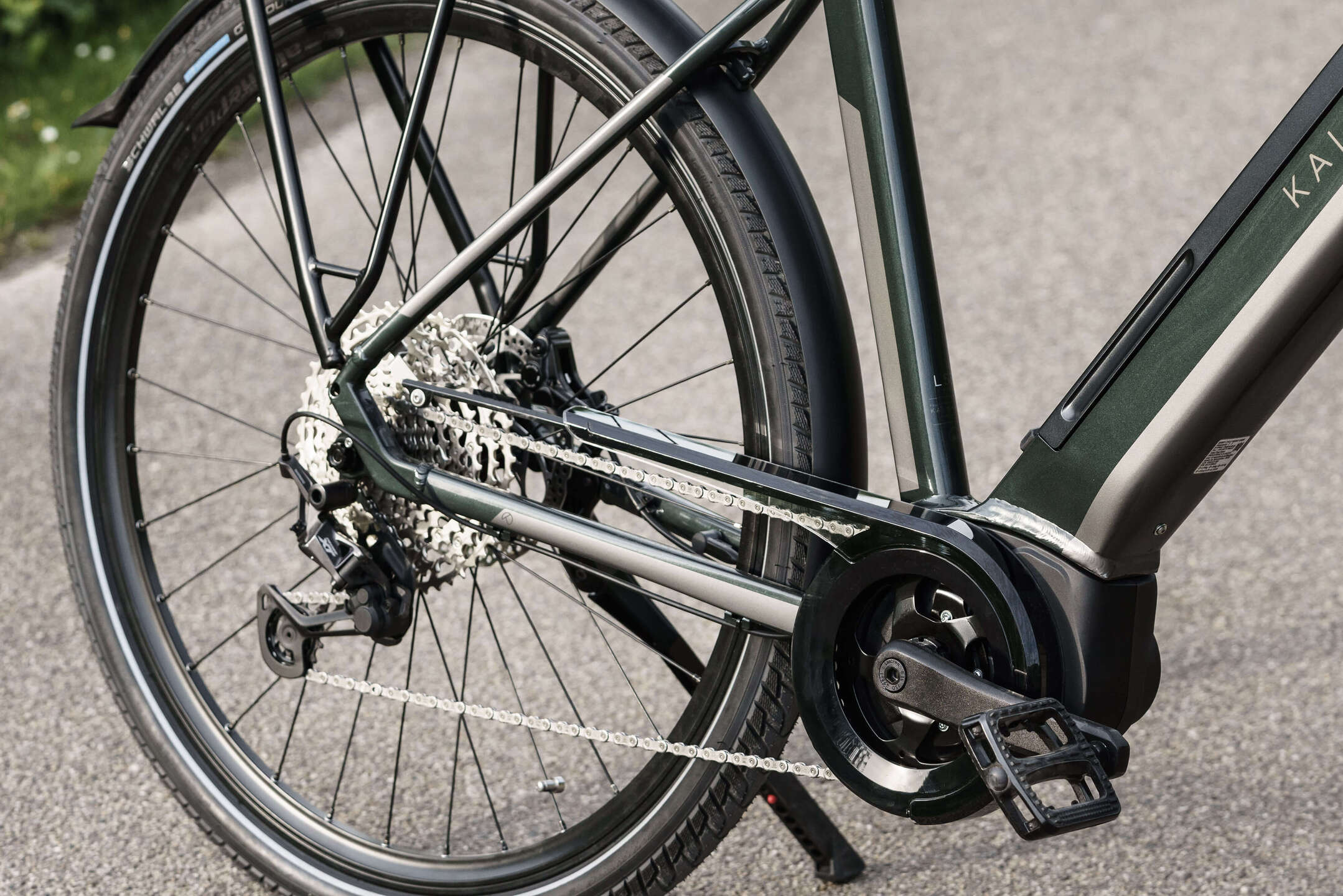Chain drive
Whatever bicycle you prefer to ride, conventional or e-bike, it definitely has a drive system: something has to transfer the energy you generate when you pedal to the wheels of the bicycle, otherwise you wouldn’t go anywhere at all. The most common kind of drive system used on bicycles is the chain drive, in other words: the common bicycle chain, combined with a set of chainrings. But how exactly does a chain drive work, what advantages does it offer, and can a belt drive be a better alternative?
How does a chain drive work?
The chain drive of a bicycle or e-bike transmits the pedalling energy to the wheels through a riveted steel chain. On the bicycle, this chain runs over two chainrings : a smaller one at the back, also called a sprocket, and a larger one at the front. The size and length of a chain can be adjusted as needed to fit snugly between the chainrings. When you pedal, you are cranking the chain forward, and it transmits the pedalling force to the rear wheel. As this suggests, the chain drive is a rear-wheel drive.
If your bicycle has a chain drive, you can also use derailleur gears. When you shift up or down a gear, the bicycle chain jumps between gears of different sizes, changing how much energy you need to pedal when going uphill or downhill. A chain drive also works in combination with hub gears.
As an alternative to the very common chain drive, a belt drive is another drive system that can be used for bicycles.

Chain drive or belt drive?
Unlike the chain drive, the belt drive uses a belt instead of a chain to transmit power. This belt runs over two pulleys, somewhat analogous to the two chainrings of a chain drive. The 'belt' is made of carbon fibre and is therefore very durable, but unlike a chain, it cannot be disconnected, so putting it on or taking it off the bicycle requires opening the bicycle frame. This means that you cannot convert a bicycle with a chain drive into a bicycle with a belt drive. To enable you to shift between gears with the belt, most belt-driven bicycles rely on hub gears. The use of a belt drive in the wheel offers a few advantages: the belt lasts two to three times longer than a chain, the system is quieter, and belt and pulleys require very little maintenance.
Advantages of a chain drive
Even though a chain does not last as long as a belt, and the chain needs regular oiling, cleaning, and maintenance, it remains superior to the belt drive in some respects. The chain is easy to remove from the bicycle and the sprockets to replace, while the belt is much more difficult to remove, is sensitive to pressure points, and sometimes needs to be retightened. The use of derailleur gears also ensures more efficient power transmission than hub gears, where there is a lot of friction due to the pulleys; this friction causes a certain amount of power loss within the belt drive. Also, the more expensive hub gears and the more complicated construction of a bicycle with belt drive entail higher costs.
Which bicycle drive should I choose?
Whether a bicycle or e-bike with chain drive or belt drive is right for you depends on the aspects are most important to you, including:
- power transmission
- care and maintenance effort
- costs
- durability
- noise level
A belt-driven wheel rolls almost silently, has a long service life, and requires virtually no maintenance. The required hub gears and belt, on the other hand, do increase costs, reduce power transmission and make repairs, when they do need to happen, more difficult and costly. A bicycle with a chain drive is suitable for you if you want to save a little money and can appreciate the more efficient power transmission through derailleur gears.
